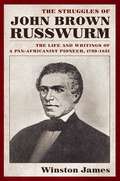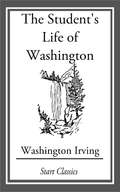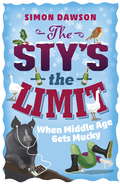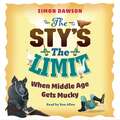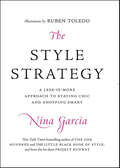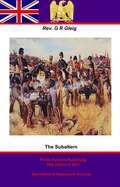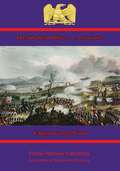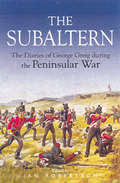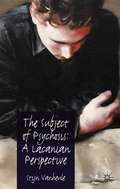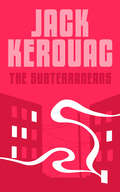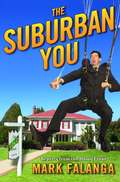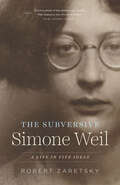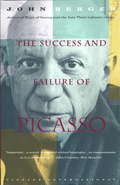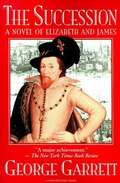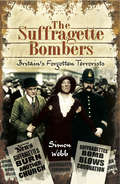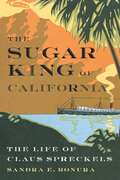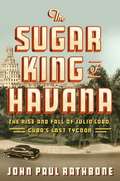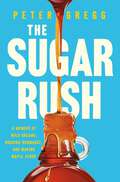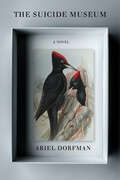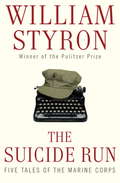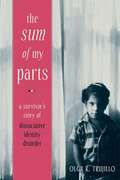- Table View
- List View
The Struggles of John Brown Russwurm: The Life and Writings of a Pan-Africanist Pioneer, 1799-1851
by Winston James“If I know my own heart, I can truly say, that I have not a selfish wish in placing myself under the patronage of the [American Colonization] Society; usefulness in my day and generation, is what I principally court.”“Sensible then, as all are of the disadvantages under which we at present labour, can any consider it a mark of folly, for us to cast our eyes upon some other portion of the globe where all these inconveniences are removed where the Man of Colour freed from the fetters and prejudice, and degradation, under which he labours in this land, may walk forth in all the majesty of his creation—a new born creature—a Free Man!”—John Brown Russwurm, 1829.John Brown Russwurm (1799-1851) is almost completely missing from the annals of the Pan-African movement, despite the pioneering role he played as an educator, abolitionist, editor, government official, emigrationist and colonizationist. Russwurm’s life is one of “firsts”: first African American graduate of Maine’s Bowdoin College; co-founder of Freedom’s Journal, America’s first newspaper to be owned, operated, and edited by African Americans; and, following his emigration to Africa, first black governor of the Maryland section of Liberia. Despite his accomplishments, Russwurm struggled internally with the perennial Pan-Africanist dilemma of whether to go to Africa or stay and fight in the United States, and his ordeal was the first of its kind to be experienced and resolved before the public eye.With this slim, accessible biography of Russwurm, Winston James makes a major contribution to the history of black uplift and protest in the Early American Republic and the larger Pan-African world. James supplements the biography with a carefully edited and annotated selection of Russwurm’s writings, which vividly demonstrate the trajectory of his political thinking and contribution to Pan-Africanist thought and highlight the challenges confronting the peoples of the African Diaspora. Though enormously rich and powerfully analytical, Russwurm’s writings have never been previously anthologized.The Struggles of John Brown Russwurm is a unique and unparalleled reflection on the Early American Republic, the African Diaspora and the wider history of the times. An unblinking observer of and commentator on the condition of African Americans as well as a courageous fighter against white supremacy and for black emancipation, Russwurm’s life and writings provide a distinct and articulate voice on race that is as relevant to the present as it was to his own lifetime.
The Student's Life of Washington; Con: For Young Persons and for the Use of Schools
by Washington IrvingWashington Irving (April 3, 1783 - November 28, 1859) was an American author of the early 19th century. Best known for his short stories The Legend of Sleepy Hollow and Rip van Winkle (both of which appear in his book The Sketch Book of Geoffrey Crayon), he was also a prolific essayist, biographer and historian. Irving and James Fenimore Cooper were the first American writers to earn acclaim in Europe, and Irving is said to have encouraged authors such as Nathaniel Hawthorne, Henry Wadsworth Longfellow, and Edgar Allan Poe. Irving was also the U.S. minister to Spain 1842-1846.
The Sty's the Limit: When Middle Age Gets Mucky
by Simon Dawson'An amazing story of love, laughter and the challenges of living from the land ... Simon's self-sufficient rural life is an inspiration to us all' - Ben FogleFollowing a drunken misunderstanding Simon Dawson gave up his job in the city, moved to the wilds of Exmoor and became an accidental self-sufficient smallholder with an array of animals. But that was years ago now. Following up on his first book, PIGS IN CLOVER, this is the story of what happens when he suddenly realises that his life is changing all over again. He's not quite the spring chicken that he used to be: he is, horror of horrors, getting older.With a cast of best friends (some more helpful than others) including Ziggy, a panicked soon-to-be father desperate to grow up, Garth, an annoying teenager, and a rather handsome pig called The General, a plan is hatched to help each other mature (or immature). Heartfelt discoveries and hilarious endeavours ensue as they work through their age-related angsts, all with a fair dose of pigs, chickens, lambs and animal madness along the way. This is Exmoor's uplifting laugh-out-loud antidote to middle age in the mud; a place where you truly realise that the sty's the limit!
The Sty's the Limit: When Middle Age Gets Mucky
by Simon DawsonFollowing a drunken misunderstanding Simon Dawson gave up his job in the city, moved to the wilds of Exmoor and became an accidental self-sufficient smallholder with an array of animals. But that was years ago now. Following up on his first book, PIGS IN CLOVER, this is the story of what happens when he suddenly realises that his life is changing all over again. He's not quite the spring chicken that he used to be: he is, horror of horrors, getting older. With a cast of best friends (some more helpful than others) including Ziggy, a panicked soon-to-be father desperate to grow up, Garth, an annoying teenager, and a rather handsome pig called The General, a plan is hatched to help each other mature (or immature). Heartfelt discoveries and hilarious endeavours ensue as they work through their age-related angsts, all with a fair dose of pigs, chickens, lambs and animal madness along the way. This is Exmoor's uplifting laugh-out-loud antidote to middle age in the mud; a place where you truly realise that the sty's the limit!
The Sty's the Limit: When Middle Age Gets Mucky
by Simon Dawson'An amazing story of love, laughter and the challenges of living from the land ... Simon's self-sufficient rural life is an inspiration to us all' - Ben FogleFollowing a drunken misunderstanding Simon Dawson gave up his job in the city, moved to the wilds of Exmoor and became an accidental self-sufficient smallholder with an array of animals. But that was years ago now. Following up on his first book, PIGS IN CLOVER, this is the story of what happens when he suddenly realises that his life is changing all over again. He's not quite the spring chicken that he used to be: he is, horror of horrors, getting older.With a cast of best friends (some more helpful than others) including Ziggy, a panicked soon-to-be father desperate to grow up, Garth, an annoying teenager, and a rather handsome pig called The General, a plan is hatched to help each other mature (or immature). Heartfelt discoveries and hilarious endeavours ensue as they work through their age-related angsts, all with a fair dose of pigs, chickens, lambs and animal madness along the way. This is Exmoor's uplifting laugh-out-loud antidote to middle age in the mud; a place where you truly realise that the sty's the limit!(p) 2016 Magna Large Print Books
The Style Strategy: A Less-Is-More Approach to Staying Chic and Shopping Smart
by Nina GarciaFrom Nina Garcia—fashion judge on Bravo’s hit Project Runway and the New York Times bestselling author of The One Hundred and The Little Black Book of Style—comes Style Strategy: a perfect primer on achieving the best fashion look possible, with a strong emphasis on saving money in the process.
The Subaltern
by George Robert Gleig Pickle Partners PublishingThis ebook is purpose built and is proof-read and re-type set from the original to provide an outstanding experience of reflowing text for an ebook reader. The Reverend Gleig was a famous military author of his day, a former officer in the British army, a commentator on military matters and a close relationship with the Iron Duke, Wellington. He wrote many works and articles including a biography of Wellington, a book based on his own experiences during the war of 1812 in America and editing the memoirs of a Chelsea pensioner. Originally published as a series of articles in Blackwoods Magazine, in the 1820s Reverend Gleig's most famous novel, The Subaltern, was published as a book in its own right soon after going through numerous editions. It presents a slightly coloured and retouched memoir of Gleig's own experiences in the Duke's army in the Peninsular and the invasion of the South of France. Somewhat lighter in tone than some of the more gruesome memoirs written of the war, it is a fascinating read. Text taken, whole and complete, from the 1825 edition, published in Edinburgh by William Blackwood. Original - 392 pages. Author- George Robert Gleig 1796-1888 (1844-1912) Linked TOC.
The Subaltern Officer. — A Narrative
by Captain George WoodThis ebook is purpose built and is proof-read and re-type set from the original to provide an outstanding experience of reflowing text for an ebook reader. George Foot started his military career in the Peninsula as a Lieutenant in the 82nd Foot, Prince of Wales's Volunteers, having being involved in the initial struggles around Lisbon at Roliça and Vimiero in 1808, before the general action at Talavera in 1809. Interestingly, he transferred to the 2nd Battalion of Detachments for the rest of the War before being seriously wounded at the battle of the Pyrenees. His narrative is enlivened with an eye for detail both in the battles he fought in and the towns and villages that he and his foot-sore comrades tramped through. Title - The Subaltern Officer. -- A Narrative Author -- Captain George Wood Text taken, whole and complete, from the edition published in 1825, London, by Septimus Prowett Original - xvi and 247 pages. Illustrations -- one illustrations.
The Subaltern: The Diaries of George Greig during the Pennisular War
by George GreigLieutenants, or "subalterns" as they were called, were very young in the British Army of the Napoleonic Wars, so George Gleig was not unique when he joined the 85th Light Infantry at the age of 17. Thrown into action in Spain against invading French forces in the summer of 1813, Gleig fought continuously for 18 months. The unique quality of Gleig's personal account was recognized immediately, and his narrative was praised by the Duke of Wellington himself. Although not always readily available to the general public. Gleig's account has been extensively drawn on by later historians and historical novelists. Gleig left behind a unique account of Wellington's victories, the primitive conditions endured by both soldiers and civilians, and the mood of the times.George Robert Gleig had a distinguished career with the British Army. His classic narrative has now been edited with an introduction and chapter notes by Ian Robertson. Robertson has been writing on the Peninsular War for 40 years. His most recent work was Wellington at War in the Peninsula.
The Subject of Psychosis: A Lacanian Perspective
by Stijn VanheuleThis book discusses what Jacques Lacan's oeuvre contributes to our understanding of psychosis. Presenting a close reading of original texts, Stijn Vanheule proposes that Lacan's work on psychosis can best be framed in terms of four broad periods.
The Subterraneans: Road Novels, 1957-1960 - On The Road; The Dharma Bums; The Subterraneans; Tristessa; Lonesome Traveler; Journal Selections (Kerouac, Jack Ser. #1)
by Jack KerouacWritten in just three days, The Subterraneans is the story of Leo Percepied, an aspiring writer and self-styled freewheeling bum who gravitates to the Subterraneans—impoverished intellectuals who haunt the bars and clubs of San Francisco, surviving on booze, Benzedrine, Proust, and Verlaine. Centering on the tempestuous and destructive relationship between Leo and Mardou Fox, a denizen of the San Francisco underground, The Subterraneans is an exuberant and melancholy tale of dark alleys and rooms and of artists and visionaries. Penguin Random House Canada is proud to bring you classic works of literature in e-book form, with the highest quality production values. Find more today and rediscover books you never knew you loved.
The Subtle Body: The Story of Yoga in America
by Stefanie SymanIn The Subtle Body, Stefanie Syman tells the surprising story of yoga's transformation from a centuries-old spiritual discipline to a multibillion-dollar American industry. Yoga's history in America is longer and richer than even its most devoted practitioners realize. It was present in Emerson's New England, and by the turn of the twentieth century it was fashionable among the leisure class. And yet when Americans first learned about yoga, what they learned was that it was a dangerous, alien practice that would corrupt body and soul. A century later, you can find yoga in gyms, malls, and even hospitals, and the arrival of a yoga studio in a neighborhood is a signal of cosmopolitanism. How did it happen? It did so, Stefanie Syman explains, through a succession of charismatic yoga teachers, who risked charges of charlatanism as they promoted yoga in America, and through generations of yoga students, who were deemed unbalanced or even insane for their efforts. The Subtle Body tells the stories of these people, including Henry David Thoreau, Pierre A. Bernard, Margaret Woodrow Wilson, Christopher Isherwood, Sally Kempton, and Indra Devi. From New England, the book moves to New York City and its new suburbs between the wars, to colonial India, to postwar Los Angeles, to Haight-Ashbury in its heyday, and back to New York City post-9/11. In vivid chapters, it takes in celebrities from Gloria Swanson and George Harrison to Christy Turlington and Madonna. And it offers a fresh view of American society, showing how a seemingly arcane and foreign practice is as deeply rooted here as baseball or ballet. This epic account of yoga's rise is absorbing and often inspiring—a major contribution to our understanding of our society.
The Suburban You: Reports from the Home Front
by Mark FalangaYou are about to discover that living in the suburbs is a whole lot funnier than you ever thought possible. For this country’s 145,892,494 (give or take) suburbanites, Mark Falanga is an utterly deadpan (and thoroughly entertaining) spokesman.Mark Falanga is a slick urban dweller, at the top of his game professionally, with a gorgeous corporate executive wife and a hip coterie in the coolest neighborhood in the city. But when baby makes three, Mark and his family enter the twilight zone called the suburbs, where public schools are good, many wives stay home, and children ride their tricycles in the driveway. Nothing is the same ever again.With the dry wit of David Sedaris, and Dave Barry’s love of the absurd, Falanga details his new, suburban landscape from the point of view of a bewildered but gung-ho everyman. From the complex political pecking order in the neighborhood, with its ultracompetitive block parties and its consuming holiday-card rivalry, to the surprises lurking on every corner—such as the twelve-year-old pyromaniac next door and the suspiciously broad-shouldered “lady” on the commuter train—The Suburban You describes in slyly understated prose the vicissitudes of life in the ’burbs.
The Subversive Simone Weil: A Life in Five Ideas
by Robert ZaretskyKnown as the “patron saint of all outsiders,” Simone Weil (1909–43) was one of the twentieth century’s most remarkable thinkers, a philosopher who truly lived by her political and ethical ideals. In a short life framed by the two world wars, Weil taught philosophy to lycée students and organized union workers, fought alongside anarchists during the Spanish Civil War and labored alongside workers on assembly lines, joined the Free French movement in London and died in despair because she was not sent to France to help the Resistance. Though Weil published little during her life, after her death, thanks largely to the efforts of Albert Camus, hundreds of pages of her manuscripts were published to critical and popular acclaim. While many seekers have been attracted to Weil’s religious thought, Robert Zaretsky gives us a different Weil, exploring her insights into politics and ethics, and showing us a new side of Weil that balances her contradictions—the rigorous rationalist who also had her own brand of Catholic mysticism; the revolutionary with a soft spot for anarchism yet who believed in the hierarchy of labor; and the humanitarian who emphasized human needs and obligations over human rights. Reflecting on the relationship between thought and action in Weil’s life, The Subversive Simone Weil honors the complexity of Weil’s thought and speaks to why it matters and continues to fascinate readers today.
The Success and Failure of Picasso (Vintage International)
by John BergerAt the height of his powers, Pablo Picasso was the artist as revolutionary, breaking through the niceties of form in order to mount a direct challenge to the values of his time. At the height of his fame, he was the artist as royalty: incalculably wealthy, universally idolized--and wholly isolated. In this stunning critical assessment, John Berger--one of this century's most insightful cultural historians--trains his penetrating gaze upon this most prodigious and enigmatic painter and on the Spanish landscape and very particular culture that shpaed his life and work. Writing with a novelist's sensuous evocation of character and detail, and drawing on an erudition that embraces history, politics, and art, Berger follows Picasso from his childhood in Malaga to the Blue Period and Cubism, from the creation of Guernica to the pained etchings of his final years. He gives us the full measure of Picasso's triumphs and an unsparing reckoning of their cost--in exile, in loneliness, and in a desolation that drove him, in his last works, into an old man's furious and desperate frenzy at the beauty of what he could no longer create.
The Succession: A Novel of Elizabeth and James
by George GarrettA story inspired by the actual letters of Queen Elizabeth to James VI of Scotland with splendid characters some of them "real" (Sir Robert Cecil, Sir Robert Carey, the Earl of Essex) and some of them "imaginary" --a messenger, a priest, a player, some Scots reivers, etc.
The Suffragette Bombers: Britain's Forgotten Terrorists
by Simon WebbIn the years leading up to the First World War, the United Kingdom was subjected to a ferocious campaign of bombing and arson. Those conducting this terrorist offensive were members of the Women's Social and Political Union; better known as the suffragettes. The targets for their attacks ranged from St Paul's Cathedral and the Bank of England in London to theatres and churches in Ireland. The violence, which included several attempted assassinations, culminated in June 1914 with an explosion in Westminster Abbey.Simon Webb explores the way in which the suffragette bombers have been airbrushed from history, leaving us with a distorted view of the struggle for female suffrage. Not only were the suffragettes far more aggressive than is generally known, but there exists the very real and surprising possibility that their militant activities actually delayed, rather than hastened, the granting of the parliamentary vote to British women.
The Sugar King of California: The Life of Claus Spreckels
by Dr. Sandra E. BonuraClaus Spreckels (1828–1908) emigrated from his homeland of Germany to the United States with only seventy-five cents in his pocket, built a sugar empire, and became one of the richest Americans in history alongside John D. Rockefeller, Warren Buffett, and Bill Gates. Migrating to San Francisco after the gold rush, Spreckels built the largest sugar beet factory of its kind in the United States. His sugar beet production in the Salinas Valley changed the focus of valley agriculture from dry to irrigated crops, resulting in the vast modern agricultural-industrial economy in today&’s &“Salad Bowl of the World.&” When Spreckels gave America its first sugar cube, he became the &“Sugar King.&” The indomitable Spreckels was a colorful and complicated character on both sides of the Pacific. A kingpin in the development of the Hawai&‘i-California sugarcane industry, he wielded a clenched fist over Hawai&‘i&’s economy for nearly two decades after occupying a position of unrivaled power and political influence with the Hawaiian monarchy, while also advancing major technology developments on the islands. The Sugar King&’s legacy continued as the Spreckels family developed large portions of California, building and breaking monopolies in agriculture, shipping, railroading, finance, real estate, horse breeding, utilities, streetcars, and water infrastructure, and building entire towns and cities from infrastructure to superstructure. In The Sugar King of California Sandra E. Bonura tells the rags-to-riches story of Spreckels&’s role in the developments of the sugarcane industry in the American West and across the Pacific, triumphing in a milieu rife with cronyism and corruption and ultimately transforming California&’s industry and labor. Harshly criticized by his enemies for ruthless business tactics but loved by his employees, he was unapologetic in his quest for wealth, asserting &“Spreckels&’s success is California&’s success.&” But there&’s always a cost for single-minded determination; the legendary family quarrels even included a murder charge. Spreckels&’s biography is one of business triumph and tragedy, a portrait of a family torn apart by money, jealousy, and ego.
The Sugar King of Havana
by John Paul RathboneThe son of a Cuban exile recounts the remarkable and contradictory life of famed sugar baron Julio Lobo, the richest man in prerevolutionary Cuba and the last of the island's haute bourgeoisie. Fifty years after the Cuban revolution, the legendary wealth of the sugar magnate Julio Lobo remains emblematic of a certain way of life that came to an abrupt end when Fidel Castro marched into Havana. Known in his day as the King of Sugar, Lobo was for decades the most powerful force in the world sugar market, controlling vast swathes of the island's sugar interests. Born in 1898, the year of Cuba's independence, Lobo's extraordinary life mirrors, in almost lurid technicolor, the many rises and final fall of the troubled Cuban republic. The details of Lobo's life are fit for Hollywood. He twice cornered the international sugar market and had the largest collection of Napoleonica outside of France, including the emperor's back teeth and death mask. He once faced a firing squad only to be pardoned at the last moment, and later survived a gangland shooting. He courted movie stars from Bette Davis to Joan Fontaine and filled the swimming pool at his sprawling estate with perfume when Esther Williams came to visit. As Rathbone observes, such are the legends of which revolutions are made, and later justified. But Lobo was also a progressive and a philanthropist, and his genius was so widely acknowledged that Che Guevara personally offered him the position of minister of sugar in the Communist regime. When Lobo declined-knowing that their worldviews could never be compatible-his properties were nationalized, most of his fortune vanished overnight, and he left the island, never to return to his beloved Cuba. Financial Times journalist John Paul Rathbone has been fascinated by this intoxicating, whirligig, and contradictory prerevolutionary period his entire life. His mother was also a member of Havana's storied haute bourgeoisie and a friend of Lobo's daughters. Woven into Lobo's tale is her family's experience of republic, revolution, and exile, as well as the author's own struggle to come to grips with Cuba's, and his family's, turbulent history. Prodigiously researched and imaginatively written, The Sugar King of Havana is a captivating portrait of the glittering end of an era, but also of a more hopeful Cuban past, one that might even provide a window into the island's future. .
The Sugar Rush: A Memoir of Wild Dreams, Budding Bromance, and Making Maple Syrup
by Peter GreggFilled with humor and madcap adventure, The Sugar Rush is the story of two friends with a sweet, golden, syrupy dream, set against the rugged New England wilderness.Trying to shake off the emotions of a recently emptied nest and midlife anxiety, Peter Gregg launches into a strange new chapter—he decides to make maple syrup. A lot of it. After recruiting his best buddy, Bert, and collecting advice from a clique of salty farmers who&’ve been sugaring all their lives, Gregg is soon consumed by what maple producers call &“the Bug.&” He sets out to chase the mythical &“five pounder&” goal—a lofty syrup production total that&’ll put him in league with the pros in Vermont. For the next three months, from January to early April, the two men battle the rugged terrain of a mountain of maples in an Ahab-like quest that eats up their energy, time, and contents of their wallets. Along the way, they learn how to handle dangerous equipment, outrun predatory wildlife and deal with the sped-up seasons brought on by climate change. Out of their struggle, they get something more valuable than the liquid gold they&’re cooking: bonds of lasting friendship, a lifeline to a community, and a sense of purpose that remains long after sugaring season is over. At its heart, The Sugar Rush is a deliciously hilarious yet moving account of the crazy journey some people will take in their "pursuit of happiness." Told with humor, gusto, and in the profane vernacular common to the woodsy hinterlands of Upstate New York and Vermont, The Sugar Rush speaks to a desire to set the bar high... and the pancake stack higher.
The Sugarless Plum
by Zippora KarzIt started as the perfect story. Zippora Karz was a member of the famed New York City Ballet by the age of eighteen. By twenty she was starring in The Nutcracker and traveling the world. It was the stuff dreams are made of until, at twenty-one, Karz became exhausted, dizzy and excessively thirsty. Heavy makeup covered sores under her arms that would not heal. When she finally went to the doctor, she was diagnosed with diabetes. Once placed on insulin to regulate her blood sugar, she would inject herself with unsafe doses before going on stage in attempts to obtain peak performance. . . with potentially fatal results. Balancing ballet and blood sugar would be a long and difficult struggle for Karz, but eventually she learned to value her body and work with it, rather than rage at its limitations. In The Sugarless Plum, Karz shares her journey from denial, shame and miseducation about her illness to how she led an active, balanced and satisfying life.
The Suicide Index: Putting My Father's Death in Order
by Joan WickershamNational Book Award Finalist: &“Wickersham has journeyed into the dark underworld inside her father and herself and emerged with a powerful, gripping story.&” —The Boston Globe One winter morning in 1991, Joan Wickersham&’s father shot himself in the head. The father she loved would never have killed himself, and yet he had. His death made a mystery of his entire life. Who was he? Why did he do it? And what was the impact of his death on the people who loved him? Using an index—the most formal and orderly of structures—Wickersham explores this chaotic and incomprehensible reality. Every bit of family history, every encounter with friends, doctors, and other survivors, exposes another facet of elusive truth. Dark, funny, sad, and gripping, at once a philosophical and a deeply personal exploration, The Suicide Index is, finally, a daughter&’s anguished, loving elegy to her father.
The Suicide Museum: A Novel
by Ariel DorfmanA billionaire Holocaust survivor hires a writer to uncover the truth of Salvador Allende&’s death, and they must confront their own dark histories to find a path forward—for themselves and for our ravaged planet. An expansive, engrossing mystery for fans of Gabriel García Márquez, Margaret Atwood, and Bill McKibben, from the acclaimed author of Death and the Maiden.Ariel needed money, and Joseph Hortha had it. Bound by gratitude toward the late Chilean president and a persistent need to know whether murder or suicide ended his life during the 1973 coup, the two men embark on an investigation that will take them from Washington DC and New York, to Santiago and Valparaíso, and finally to London. They encounter an unforgettable cast of characters: a wedding photographer who can predict a couple&’s future; a policeman in pursuit of the serial killer targeting refugees; a revolutionary caught trying to assassinate a dictator; and, above all, the complex women who support them along the way, for their own obscure reasons. Before Ariel and Joseph can resolve a quest full of dangers and enigmas, they must help each other come to terms with guilt and trauma from personal catastrophes hidden deep in the past. What begins as an intriguing literary caper unfolds into a propulsive, philosophical saga about love, family, machismo, fascism, and exile that asks what we owe the world, one another, and ourselves. By boldly mixing fiction and reality, imagination and history, The Suicide Museum explores the limits of the novelistic genre, expanding it in an unsuspected and exceptional way.
The Suicide Run: Five Tales of the Marine Corps
by William StyronThe four narratives which make up this posthumous collection draw upon William Styron's experiences in the US Marine Corps, and give us an insight into the early life of one of America's greatest modern writers. William Styron earned a commission as second lieutenant in the U.S. Marine Corps in 1945, shortly after his twentieth birthday. He was scheduled to participate in the assault on mainland Japan, most likely as the leader of a mortar platoon, but in early August the United States dropped atomic bombs on Hiroshima and Nagasaki, ending the war. Before he was discharged Styron served a six-week stint as an officer at the military prison on Harts Island in Long Island Sound. In December 1945 he was mustered out of the Marine Corps, and lived with his father and stepmother at their home in Newport News, Virginia, before completing his bachelor degree at Duke University and embarking on his first novel, Lie Down in Darkness. Early in 1951, as he was composing the last two chapters of his manuscript, Styron was recalled into the Marine Corps for service in Korea. The stories of The Suicide Run are set in the grueling camps and sweltering training fields that marked the limbo point between civilian life and the horrors of war. Fictional yet autobiographical, the narratives of this collection focus on young men who, broiling in the claustrophobia of military life, always conscious of the imminence of action, try to maintain their sanity in the wake of their abrupt removal from normal life. In The Suicide Run, two young men at Camp Lejeune, North Carolina embark on suicidal 36 hour leave periods Â- crossing the 500 miles to New York and back at breakneck speed for a few hours with their mistresses and a reprieve from the 'sexual famine' of army life. In Blankenship a young idealist and deserter at a military prison hits a nerve in a model officer, with disastrous consequences for both, and in My Father's House, the young protagonist returns home from war to be met by the cold war of his stepmother's disapproval, and be haunted by all the battles he almost fought. Imbued with a sense of frustration and looming fear, keenly rendered in Styron's pithy and acutely observational prose, this collection is a fascinating insight into military life and the 'mysterious community of men' that comprises the US Marine Corps, and a posthumous glimpse into the mind of a mighty writer.
The Sum Of My Parts: A Survivor's Story Of Dissociative Identity Disorder
by Olga R. TrujilloBy the first day of kindergarten, Olga Trujillo had already survived years of abuse and violent rape at the hands of her tyrannical father. Over the next ten years, she would develop the ability to numb herself to the constant abuse by splitting into distinct mental "parts. " Dissociative identity disorder (DID) had begun to take hold, protecting Olga's mind from the tragic realities of her childhood. InThe Sum of My Parts, Olga reveals her life story for the first time, chronicling her heroic journey from survivor to advocate and her remarkable recovery from DID. Formerly known as multiple personality disorder, DID is defined by the presence of two or more identities. In this riveting story, Olga struggles to unearth memories from her childhood, and parallel identities--Olga at five years old, Olga at thirteen--come forth and demand to be healed. This brave, unforgettable memoir charts the author's triumph over the most devastating conditions and will inspire anyone whose life has been affected by trauma.
